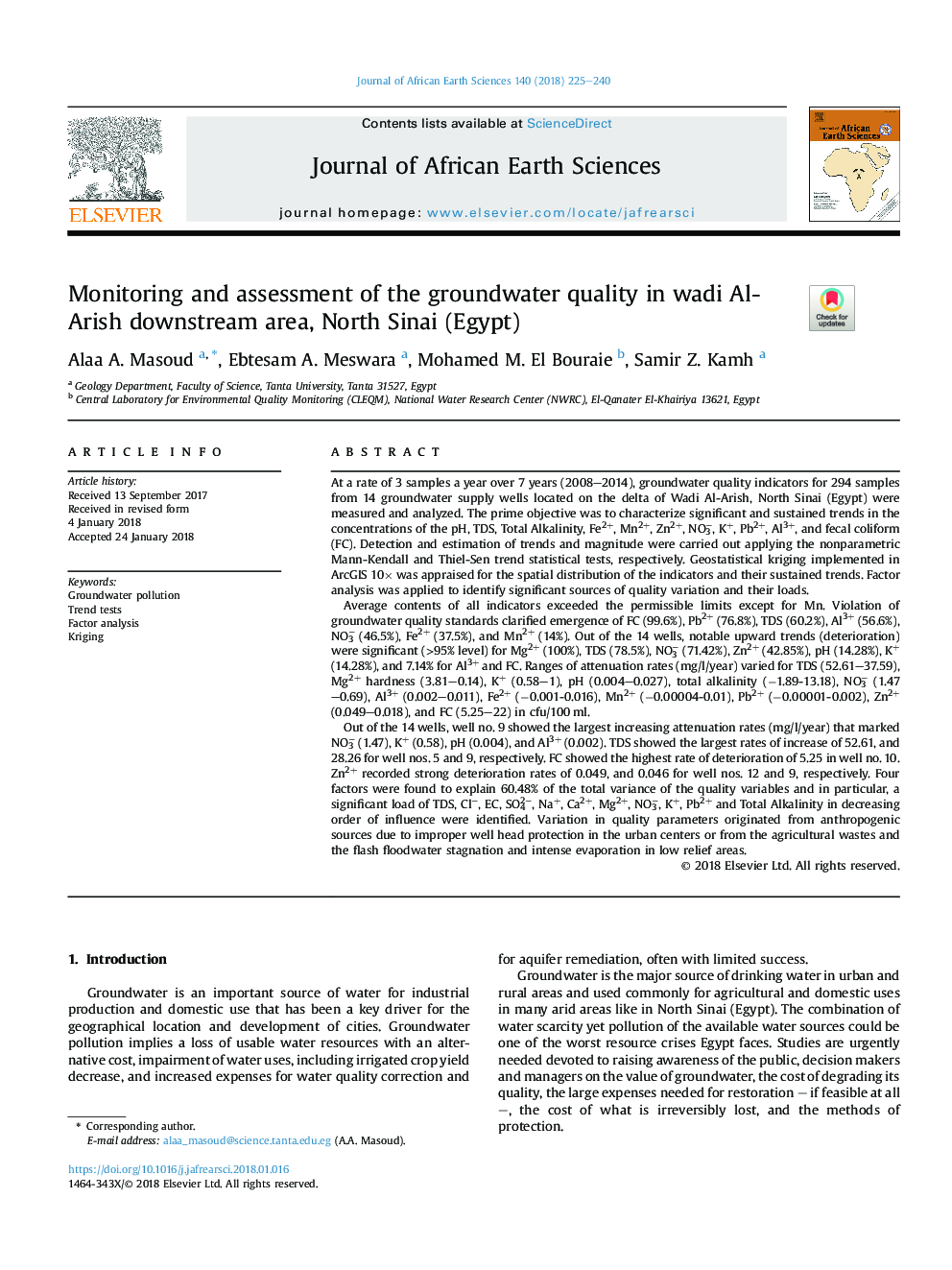| Article ID | Journal | Published Year | Pages | File Type |
|---|---|---|---|---|
| 8913564 | Journal of African Earth Sciences | 2018 | 16 Pages |
Abstract
Out of the 14 wells, well no. 9 showed the largest increasing attenuation rates (mg/l/year) that marked NO3â (1.47), K+ (0.58), pH (0.004), and Al3+ (0.002). TDS showed the largest rates of increase of 52.61, and 28.26 for well nos. 5 and 9, respectively. FC showed the highest rate of deterioration of 5.25 in well no. 10. Zn2+ recorded strong deterioration rates of 0.049, and 0.046 for well nos. 12 and 9, respectively. Four factors were found to explain 60.48% of the total variance of the quality variables and in particular, a significant load of TDS, Clâ, EC, SO42â, Na+, Ca2+, Mg2+, NO3â, K+, Pb2+ and Total Alkalinity in decreasing order of influence were identified. Variation in quality parameters originated from anthropogenic sources due to improper well head protection in the urban centers or from the agricultural wastes and the flash floodwater stagnation and intense evaporation in low relief areas.
Related Topics
Physical Sciences and Engineering
Earth and Planetary Sciences
Geology
Authors
Alaa A. Masoud, Ebtesam A. Meswara, Mohamed M. El Bouraie, Samir Z. Kamh,
